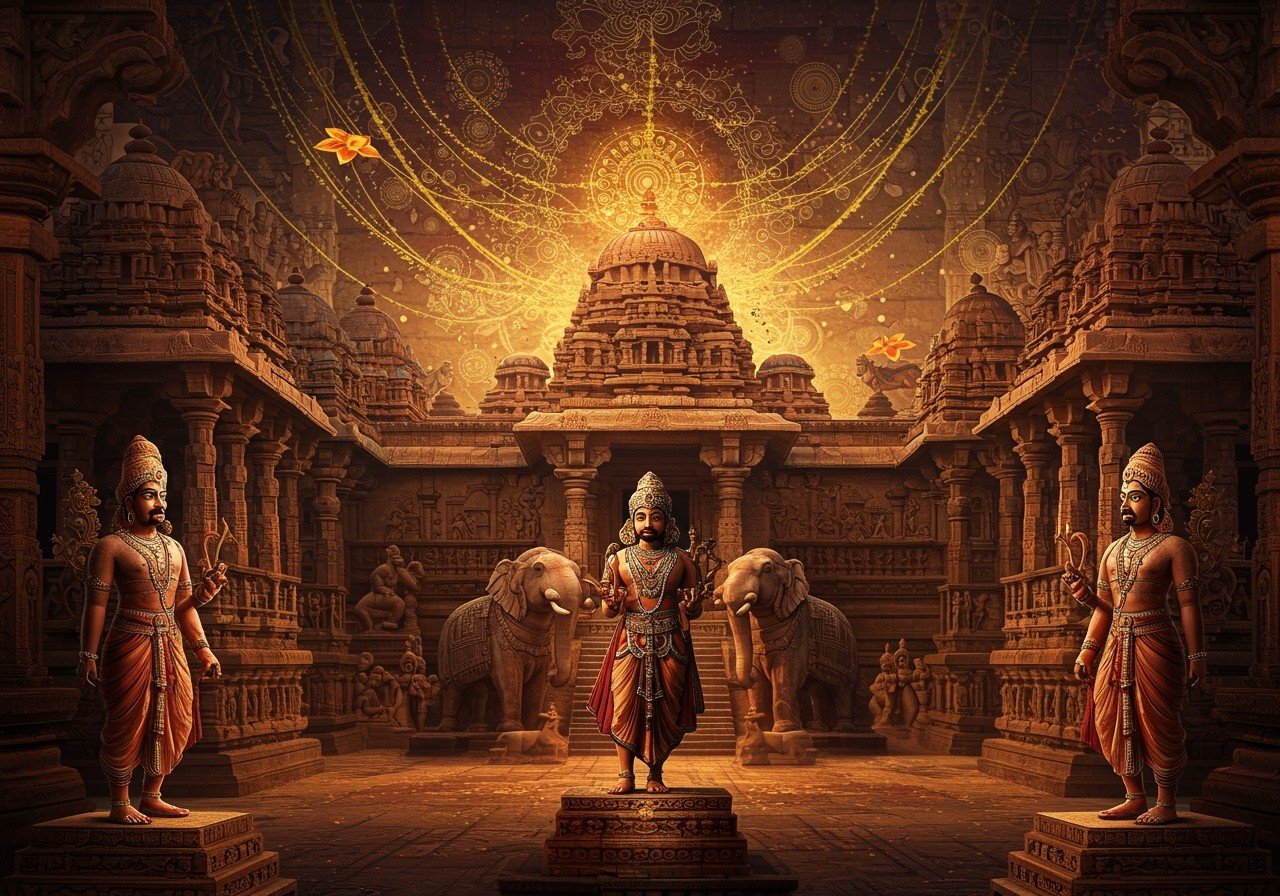
The Chalukya dynasty, a pivotal era in Indian history, reigned from the 6th to the 12th centuries. Their legacy encompasses remarkable contributions to art, architecture, and culture across southern and central India. This blog post explores the three branches of the Chalukya dynasty—the Badami Chalukyas, the Eastern Chalukyas, and the Western Chalukyas—to understand their distinct characteristics and historical impact.
Origins and Expansion of the Chalukya Dynasty
The Chalukya dynasty emerged in the 6th century in the Deccan region under the leadership of Pulakeshin I. The name “Chalukya” is believed to be derived from a title used by their ancestors. The dynasty’s early success stemmed from their military prowess and administrative skills, with Badami serving as their initial capital. Badami subsequently flourished as a center of art and architecture, showcasing the dynasty’s growing influence.
The Badami Chalukyas (6th-8th Centuries)
The Badami Chalukyas, also known as the Early Western Chalukyas, established their capital in Vatapi (present-day Badami). Pulakeshin II, a prominent ruler, significantly expanded the empire, reaching its zenith during his reign. This period witnessed the construction of magnificent rock-cut temples at Aihole, Badami, and Pattadakal, a UNESCO World Heritage Site, demonstrating remarkable architectural skills. The Badami Chalukyas also fostered Sanskrit and Kannada literature, further enriching the cultural landscape. Internal conflicts and invasions eventually led to their decline in the 8th century.
Discover the architectural wonders of the Badami Cave Temples.
The Eastern Chalukyas of Vengi (7th-12th Centuries)
The Eastern Chalukyas branched out in the 7th century when Kubja Vishnuvardhana, Pulakeshin II’s brother, established his rule in Vengi. This branch played a key role in the development of Telugu culture and language, leaving a distinct mark on the region. They constructed numerous temples and monuments in Andhra Pradesh, showcasing their architectural prowess. The Eastern Chalukyas maintained close relationships with the Pallavas and Rashtrakutas, fostering cultural exchange. Through marital alliances, they eventually merged with the Chola dynasty.
Explore the history and significance of the Bhoganandishwara Temple near Nandi Hills.
Plan your visit to the Bhoganandishwara Temple with this essential guide.
The Western Chalukyas of Kalyani (10th-12th Centuries)
The Western Chalukyas of Kalyani, also known as the Later Chalukyas, rose to prominence in the late 10th century after the decline of the Rashtrakutas. Establishing their capital in Kalyani (present-day Basavakalyan), they left behind a rich architectural legacy. Notable temples include the Mahadeva Temple at Itagi and the Kasivisvesvara Temple at Lakkundi. Under rulers like Vikramaditya VI, the empire expanded, and literature, art, and education thrived. However, ongoing conflicts with the Cholas, Hoysalas, and Kalachuris led to their eventual decline in the 12th century.
Learn about the religious importance and history of the Kandariya Mahadeva Temple.
Explore the architectural wonders of the Sas Bahu Temples.
Poojn.in: Connecting You to India’s Rich Heritage
Poojn.in, India’s leading online store for cultural and religious goods, offers a wide selection of products to help you connect with India’s rich heritage. We provide high-quality puja items, including traditional copper and brass items reminiscent of the Chalukya era, puja thalis, deepams, kumkum, and sandalwood products.
Explore our collection of genuine products, each accompanied by detailed information on its ritual significance and proper usage. Experience the convenience of online shopping while honoring the traditions of the past.
Shop for Bel malas at Poojn.in.
Find Shiva Lingams for your puja needs.
Frequently Asked Questions about the Chalukya Dynasty
What were the main achievements of the Chalukya dynasty? The Chalukyas made significant contributions to art, architecture, literature, and administration. They built impressive temples, fostered literary works in Sanskrit and Kannada, and implemented effective administrative systems.
How long did the Chalukya dynasty rule? The Chalukya dynasty ruled for approximately six centuries, from the 6th to the 12th century.
What was the relationship between the different Chalukya branches? The three Chalukya branches—Badami, Eastern, and Western—were related but ruled different regions and had distinct characteristics.


